Learning how to improve customer experience has become a direct driver of retention and long-term business growth for B2B businesses. In a competitive market, being known for delivering a positive customer experience can give you a clear edge.
Today, customers expect more than a good product. They want reliability, fast resolutions, and a seamless experience across the entire customer journey.
The good news? You don’t need to spend your entire budget to improve customer experiences.
Start with the basics: improve employee training and experiences, personalize interactions, and reward customer loyalty.
In this guide, we explore proven ways to improve customer experience that help you retain and delight customers.
Customer experience, often called CX, is clients’ overall perception of and experience with your business. It’s shaped by every customer interaction, from the first sales conversation and lead response times to long-term account management.
For B2B companies, where relationships often span years, CX directly influences brand loyalty, client retention, and business growth.
A 2025 CX report by Ipsos stated that 70% of customers choose brands they know will give them a good experience.
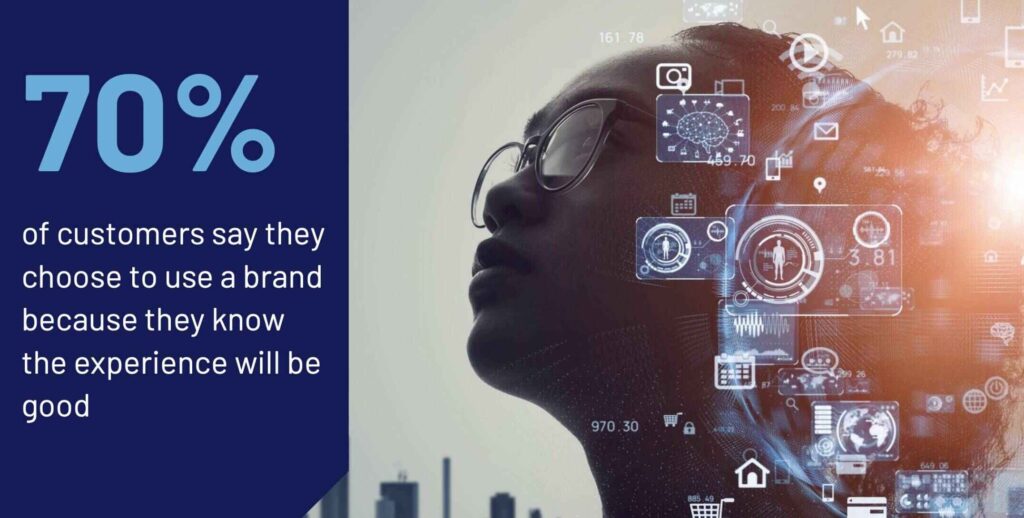
Image via Ipsos
Learning how to improve customer experience starts by recognizing that every touchpoint matters.
Many confuse customer service with customer experience, but they’re not the same. Service is one piece of the puzzle, while experience is the full picture.
Customer service refers to the support you provide when a client has a question or faces pain points. Customer experience is broader. It covers the customer journey a client goes through, whether or not they contact your support team.
Improving customer experience means optimizing every interaction, not just the ones that involve support. This includes onboarding, follow-ups, and even offering self-service options that empower customers.
Three key aspects shape how clients perceive their experience with your business:
Here are some helpful tips on how to improve customer experience if you’re in the B2B space.
Building a customer-centric culture means placing the customer at the core of decisions, processes, and strategies.
It involves aligning key departments, like sales and marketing, around the shared goal of delivering consistent value and satisfaction. For a culture like this to succeed, leadership must set the tone.
Something as simple as providing customers with tracking information, the way FedEx does, can help you retain customers for the long term.
![]()
Image via FedEx
Most importantly, a customer-centric culture eliminates potential gaps that could harm the customer experience.
For example, when teams share the same customer information, every department can continue a conversation seamlessly. This helps create a more consistent journey for clients.
So how does this benefit the customer in the long run? In the following ways:
Improving responsiveness means reacting to client inquiries, issues, or requests more quickly. A quick and responsive resolution covers all communication channels like email, phone, chat, and ticketing systems.
It also involves setting clear internal targets for response times and tracking key performance indicators. Your skilled customer-facing teams should aim to solve problems on the first contact whenever possible.
That speed and efficiency create a positive customer experience and enhance trust.
Take Salesforce, for example, which provides a pop-up option for contacting customer support when you open its website. You don’t need to set up an account to contact the support team.
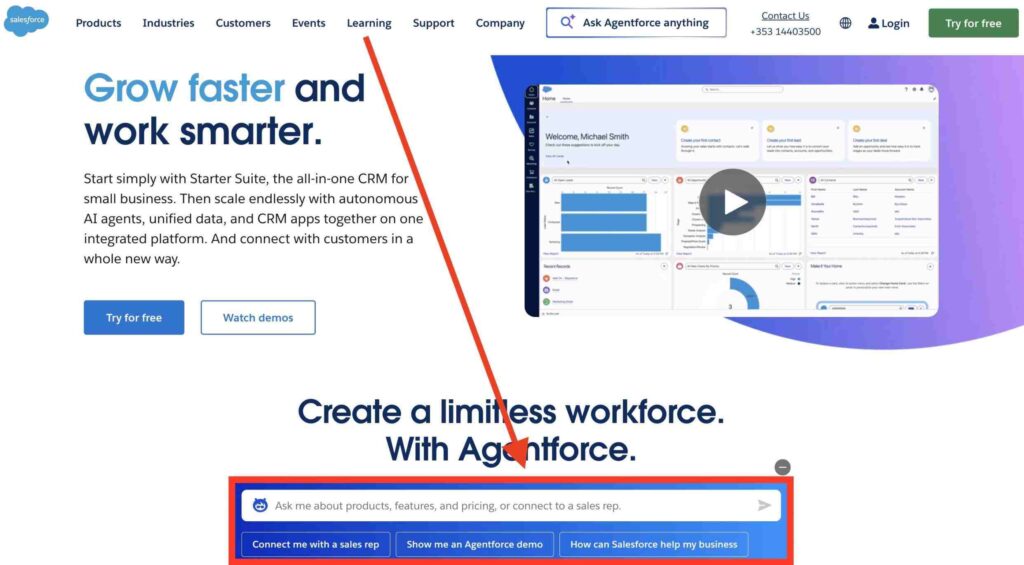
Image via Salesforce
This level of responsiveness provides visitors with the flexibility to make important inquiries without restrictions.
Benefits for customers include:
Ensuring that your staff feels supported, engaged, and equipped to perform their jobs effectively positively impacts customer experiences.
Keep in mind that improving employee experience goes beyond a salary raise. It also involves refining internal communication, offering clear career paths, and giving them customer service tools that reduce friction.
It also means fostering a positive workplace culture where ideas are heard and contributions recognized. This, in turn, benefits customers in the following ways:
Also Read:
Your customers are more than marketing demographics or transaction data. Real people exist behind the numbers you track.
Knowing your customers means understanding their pain points, decision criteria, and long-term plans. This deeper awareness is key to learning how to improve customer experience in meaningful ways.
You can achieve this by collecting customer feedback and holding regular check-ins. This extends even to customers who haven’t been in contact for a while.
Tracking customer behavior through analytics tools or client service software also provides valuable insights into their needs and preferences.
Building customer personas that reflect real clients helps your teams understand customer behavior from the customer’s perspective. This data-driven understanding strengthens your customer experience strategy.
The benefits for customers include:
Designing omnichannel experiences involves creating a seamless experience across all platforms where customers interact with your business.
These include physical locations, websites, mobile apps, social media, chat, and customer service. Note that it’s different from multichannel. Here’s how:
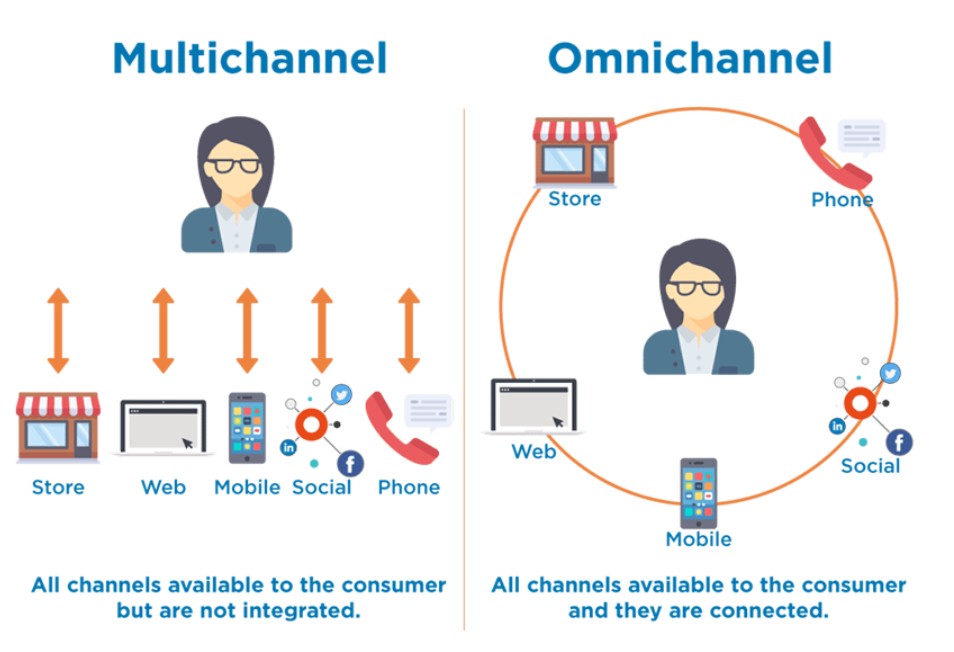
Image via timetoreply
The goal is to eliminate gaps between these touchpoints. When communication channels are connected, customers always find someone ready to help — no matter where they reach out.
Omnichannel setups also support conversation continuity. For example, a customer starts a conversation via email, then later calls the support team. The representative who responds should already have the full context.
This approach reduces repetition and fosters trust because customers feel understood and supported across various channels. Other benefits include:
Also Read:
Customer journey mapping shows the path a customer takes from initial contact to purchase and beyond.
It’s an important process that highlights what customers experience at each stage, including their needs, expectations, and possible frustrations.
This gives your B2B business the ability to anticipate what needs to be done to make for happy customers.
For example, if leads suddenly go silent after requesting a sample of your product, journey mapping can reveal the issue. It could be that the follow-up emails were slow or unclear.
Here’s how customer journey mapping benefits customers:
Personalized interactions mean understanding each customer’s unique preferences and behaviors, rather than generalizing them all. You then use that insight to tailor their experience.
For B2B businesses, this can include sending customized product recommendations or adjusting communication styles.
Personalized interactions improve customer experience by making clients feel seen and understood. For example, when a business remembers a client’s purchase history or preferred contact method, it builds trust.
Plus, it allows customer-facing teams to respond faster and more accurately to individual issues. Additional benefits include:
Also Read:
Emerging technologies like advanced AI are helping B2B companies manage customer interactions more efficiently.
A McKinsey report showed that 53% of surveyed business leaders anticipate increased AI use for personalized outreach. This includes chatbots and virtual assistants to handle customer inquiries.
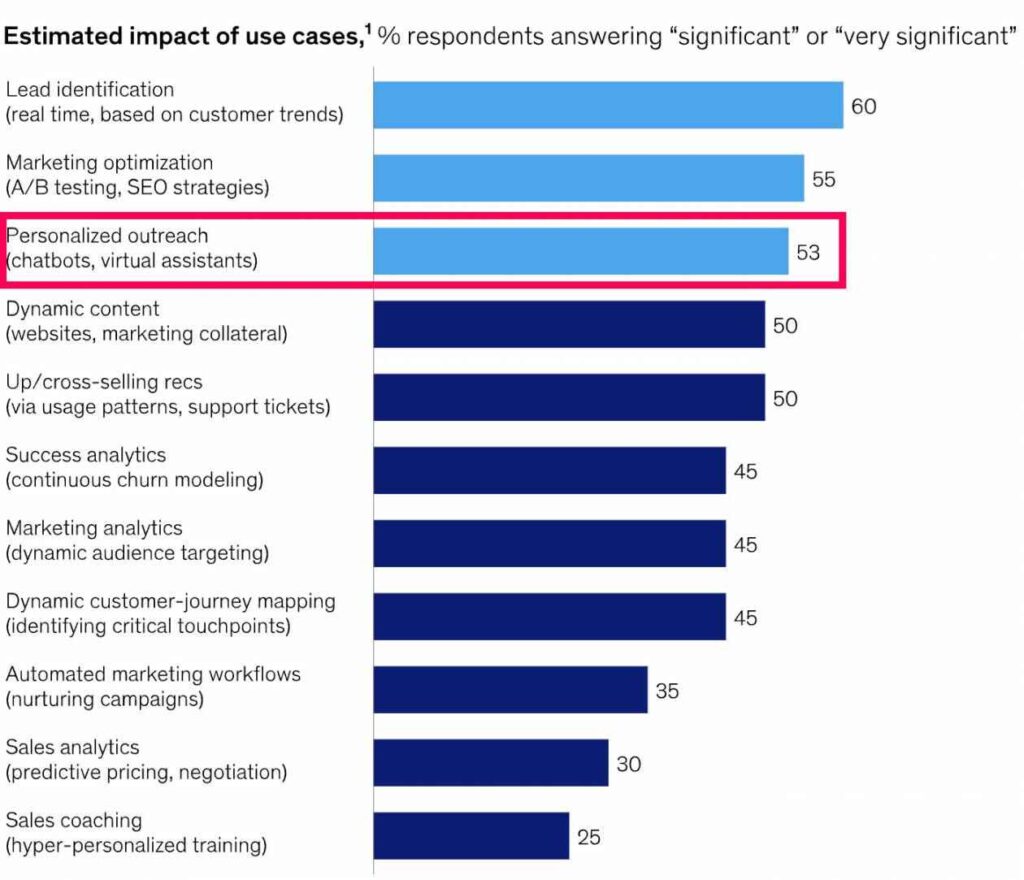
Image via McKinsey
This level of tech adoption enhances customer experience by eliminating friction in communication and service delivery.
Besides personalized outreach, B2B brands can automate billing, email analytics, lead identification, and more. These make your customer experience strategy successful.
Automation also has the added advantage of freeing up teams to handle more complex issues like chargebacks and refunds.
Other benefits of leveraging technology and innovation for customers include:
The best way to know what your customers really feel about your brand is to ask them directly. For this, you need surveys. They capture real opinions from clients who use your products and services.
Surveys can take various forms, including post-purchase questionnaires, satisfaction ratings, and open-ended customer feedback forms.
The goal is to gather valuable insights that reveal what’s working well and what needs improvement.
Here’s an example of a simple customer feedback survey.
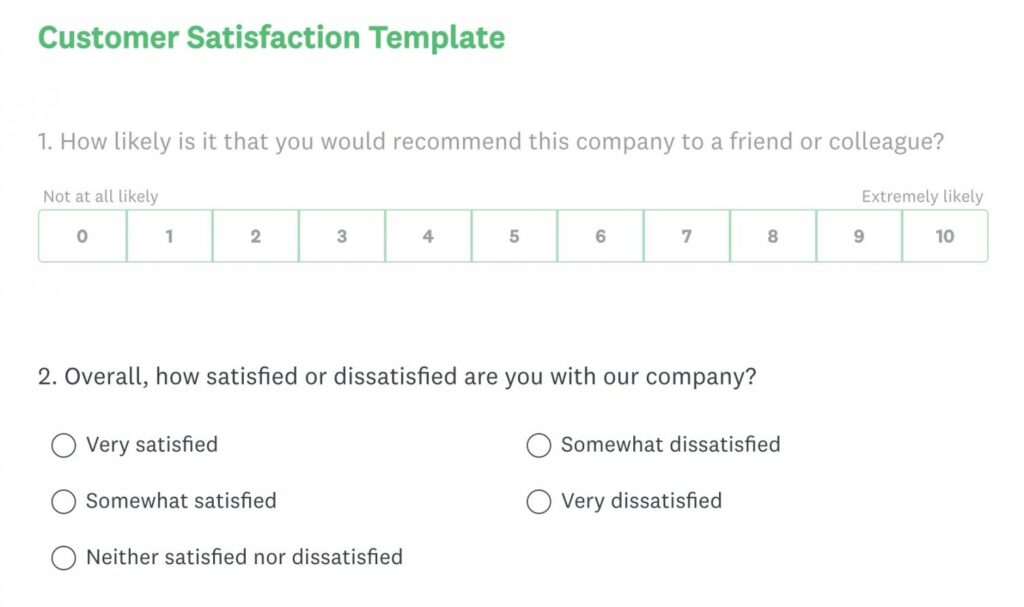
Image via SurveyMonkey
For B2B companies focused on how to improve customer experience, surveys also support long-term business growth. They create a consistent feedback loop that helps identify gaps and measure progress over time.
Plus, customers appreciate being asked for input, especially when their feedback leads to real change. That increases customer satisfaction, brand loyalty, and overall trust.
Key benefits for customers include:
Also Read:
Appreciating existing customers for their continued patronage is good for your brand. It encourages them to stay loyal and refer new customers, boosting business growth and expanding your customer base.
For B2B companies, this could include loyalty programs or discounts for repeat clients. You can also offer early access to new features or recognize referrals publicly.
A customer who feels acknowledged for their support is more likely to continue purchasing your products and services.
Additional customer benefits include:
The final step in learning how to improve customer experience is to measure, monitor, and iterate on all the strategies you’ve implemented.
You need to track customer interactions and analyze the data. Then, make continuous improvements based on what you learn.
This practical approach keeps your business aligned with customer expectations, not assumptions.
Some of the key customer service metrics you can measure to gauge satisfaction include:
CSAT measures customer satisfaction with your product, service, or specific interaction. It’s often collected through short surveys after a purchase or support call. This metric tracks immediate reactions and highlights areas affecting client trust.
Here’s how you calculate a CSAT score:
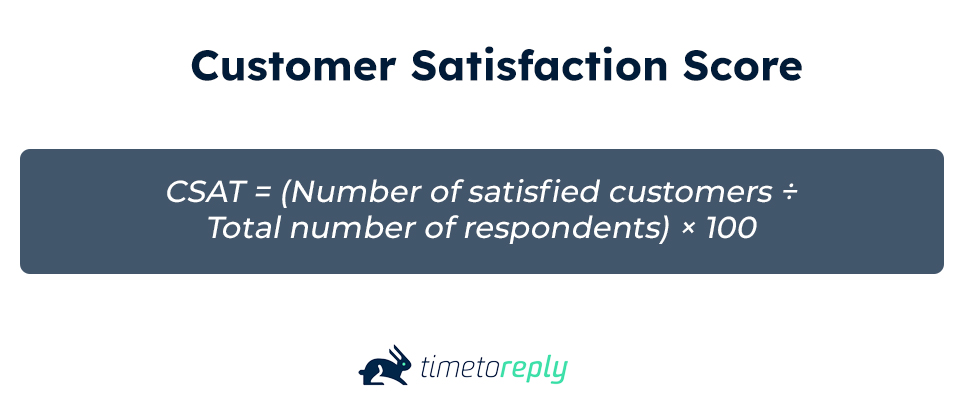
NPS shows how likely clients are to recommend your company to others. It’s based on a single question that usually ranks loyalty on a scale of 0 to 10. You can use it to identify satisfied customers who can become brand advocates.
Here’s how you calculate NPS:
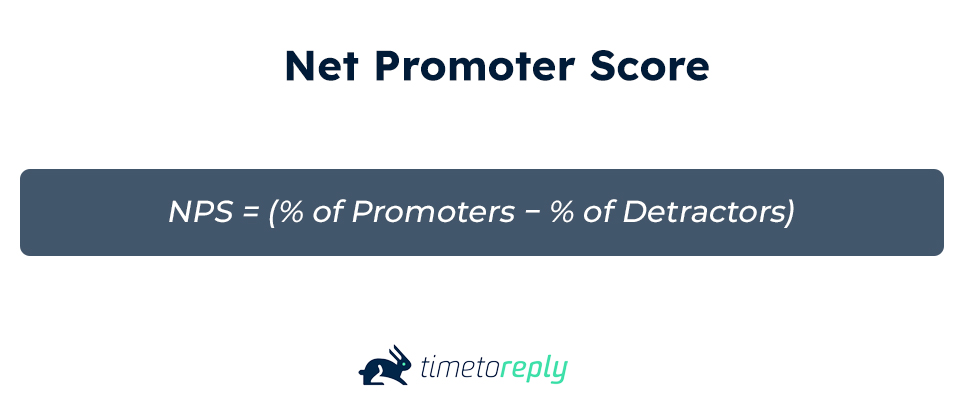
CES measures how much effort a customer puts into solving a problem or completing a task. A high effort score usually signals frustration. Lowering customer effort is a strong indicator that a business understands how to improve customer experience for long-term satisfaction.
Here’s the formula for calculating CES:
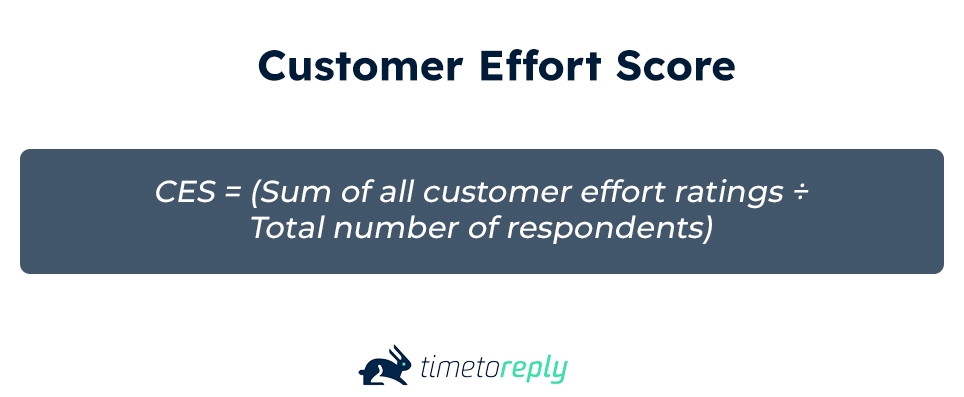
Churn shows how many customers stop doing business with you, while retention tracks how many stay. These two metrics directly reflect your service quality and relationship management.
You can calculate customer churn through the following formula:
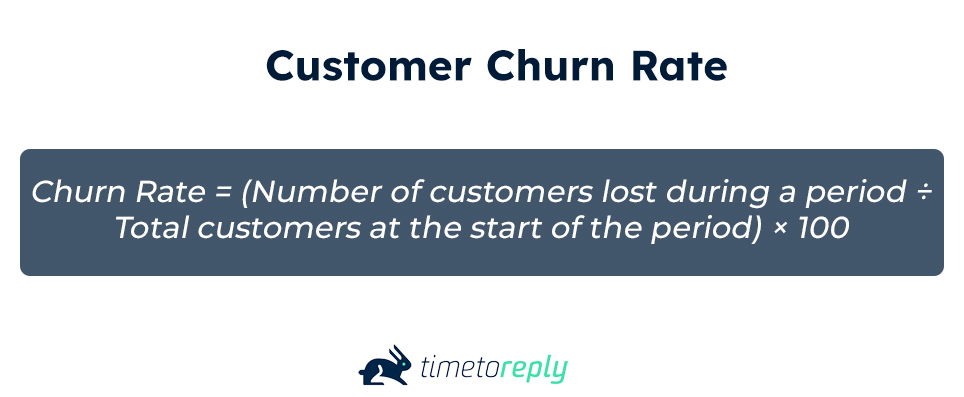
And here’s how to calculate Customer Retention Rate:
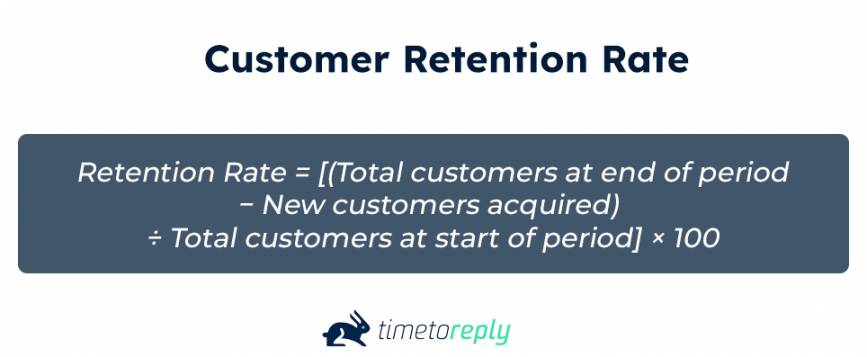
CLV estimates the total revenue a customer brings over their relationship with your business. Understanding this metric helps you see how to improve customer experience by investing in relationships that matter most.
Here’s how you calculate CLV:
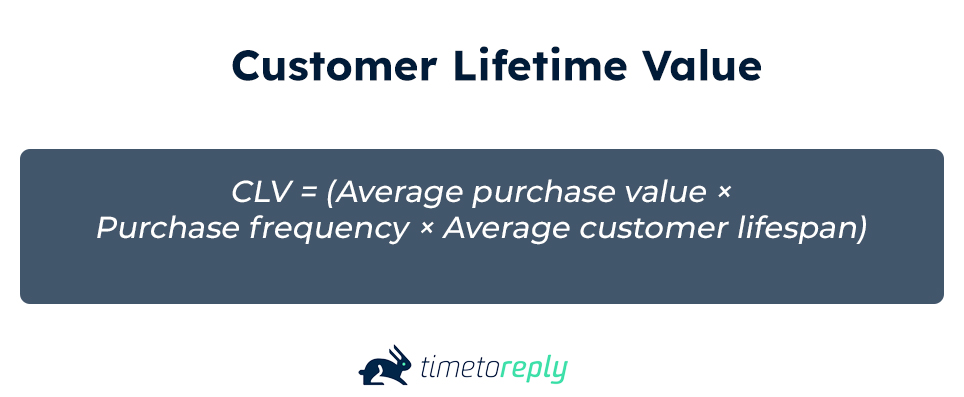
ART measures how long it takes your team to resolve customer issues. Shorter times usually mean more efficient service and happy customers. Tracking it helps you spot bottlenecks and understand how to improve customer experience through faster problem-solving.
Here’s how you calculate ART:
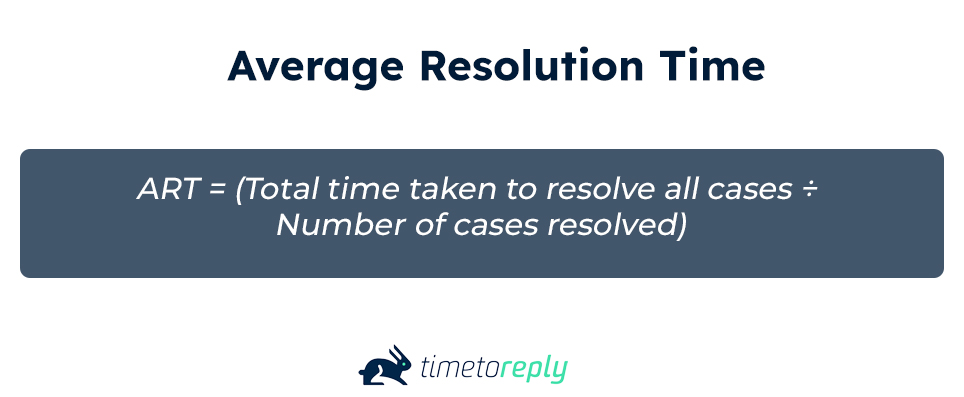
FRT tracks how quickly your team responds to a customer’s first inquiry. A shorter FRT shows your team is attentive and dependable. It’s an easy metric to track and a clear indicator of how to improve customer experience through timely communication.
Here’s how you calculate FRT:
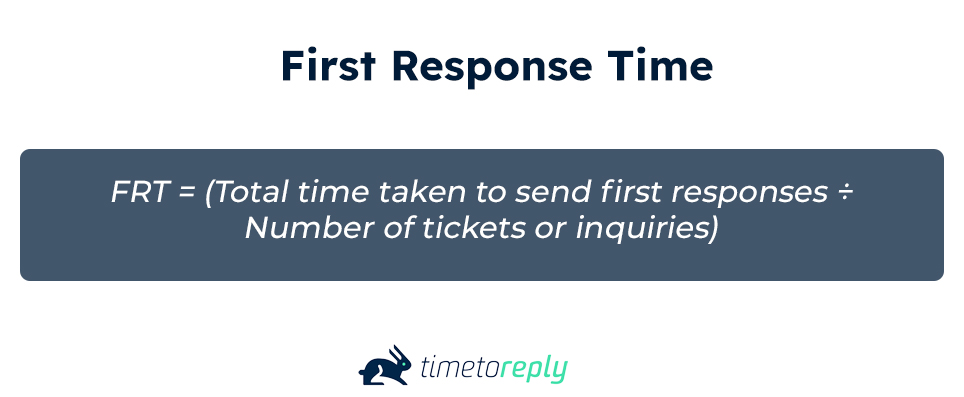
FRT = (Total time taken to send first responses ÷ Number of tickets or inquiries)
Also Read:
Maintaining strong customer relationships, especially for B2B companies focused on how to improve customer experience, comes with some challenges.
These include:
1. How can we improve customer experience?
To improve customer experience, focus on the following:
2. What are the 4 Ps of customer experience?
The 4 Ps of customer experience are:
3. What are the 5 steps of customer experience?
The five steps of customer experience include:
4. What are the 3 Es of customer experience?
The 3 Es of customer experience include:
5. What are the qualities of good customer service?
Good and improved customer service relies on clear communication, patience, and responsiveness. Employees should listen attentively, solve problems efficiently, and maintain a positive outlook.
Professionalism and reliability also foster trust and minimize friction in long-term partnerships.
6. How do you handle difficult customers?
Dealing with difficult customers is part of doing business. Here’s how to manage it without escalation:
7. How do you measure customer satisfaction?
You can measure customer satisfaction through several metrics, including:
8. What is the biggest challenge in customer service?
One of the biggest challenges in customer service is maintaining consistency across all touchpoints. Clients expect the same level of attention and accuracy from every department.
Maintaining that consistency helps build trust and demonstrates how to improve customer experience through reliable communication and support.
Also Read:
Improving customer service is about building long-term trust through consistent, thoughtful interactions. From creating a customer-centric culture to utilizing data-driven insights, every effort strengthens your customer experience strategy.
Focusing on personalization, responsiveness, and communication alignment builds customer loyalty. Customers who feel understood and supported are far more likely to stay and advocate for your brand.
Visit timetoreply to learn how to improve customer experience by enhancing email response times and fostering stronger customer relationships.
Get live inbox alerts and reply quickly to customer emails with timetoreply